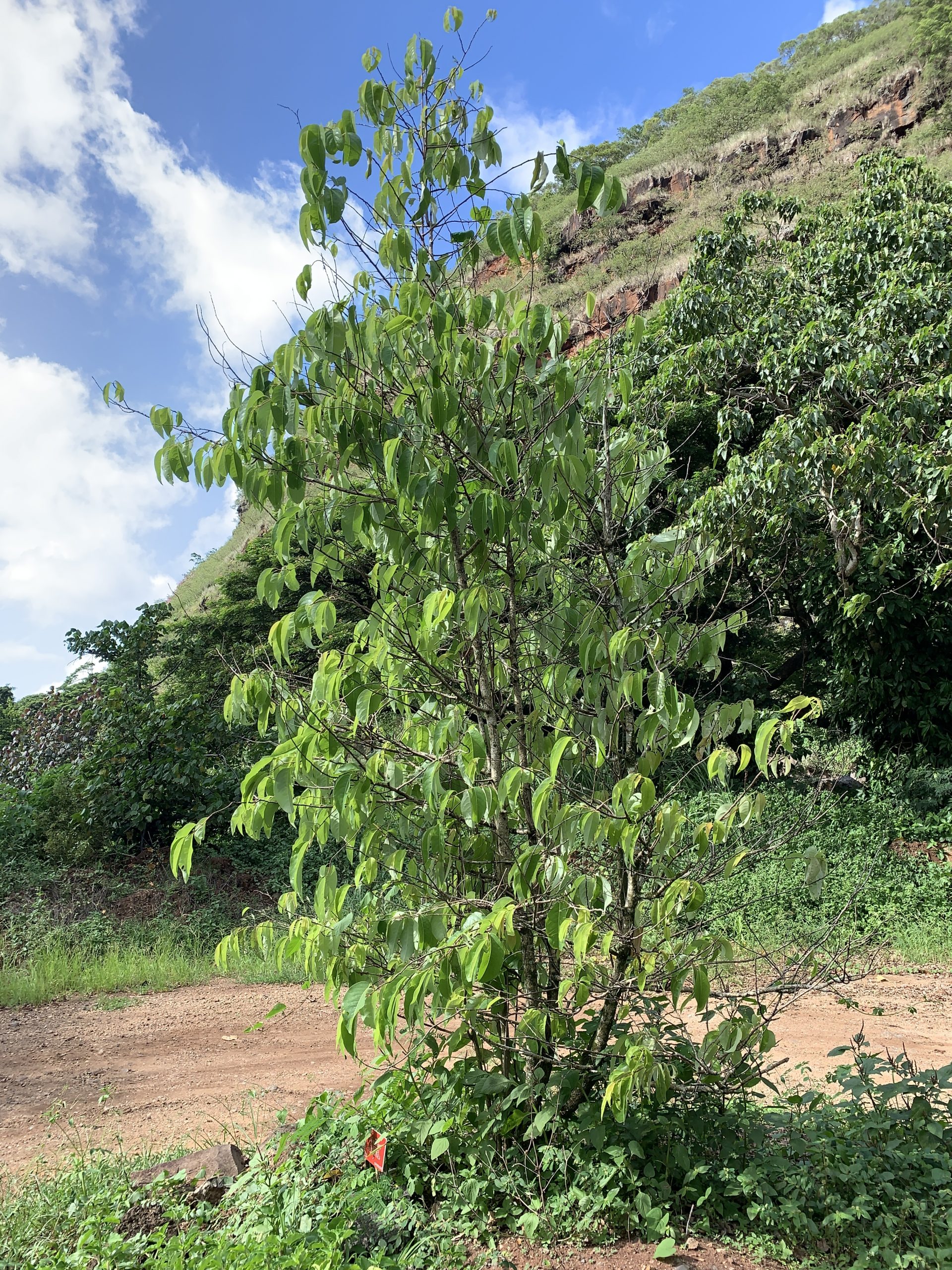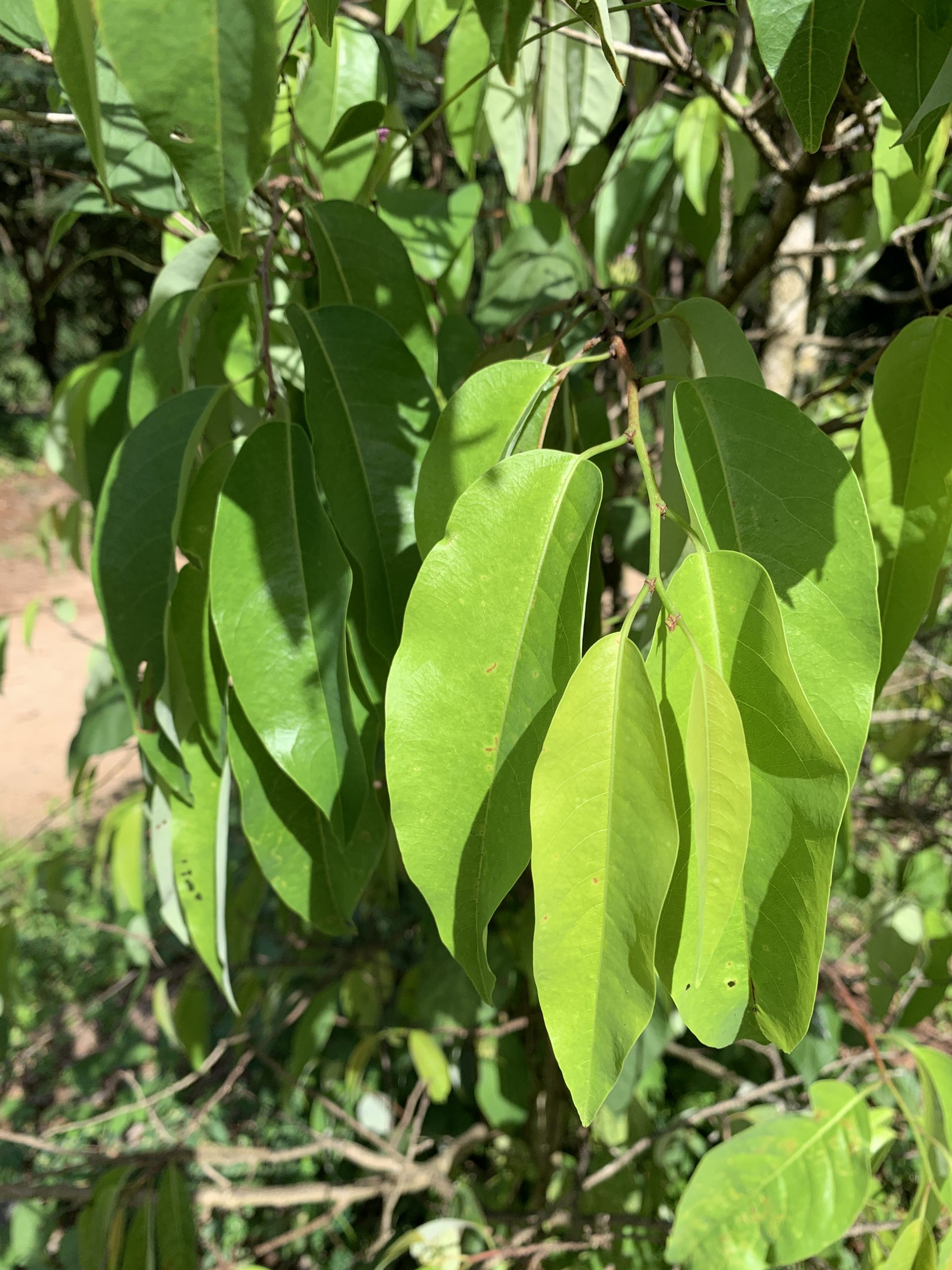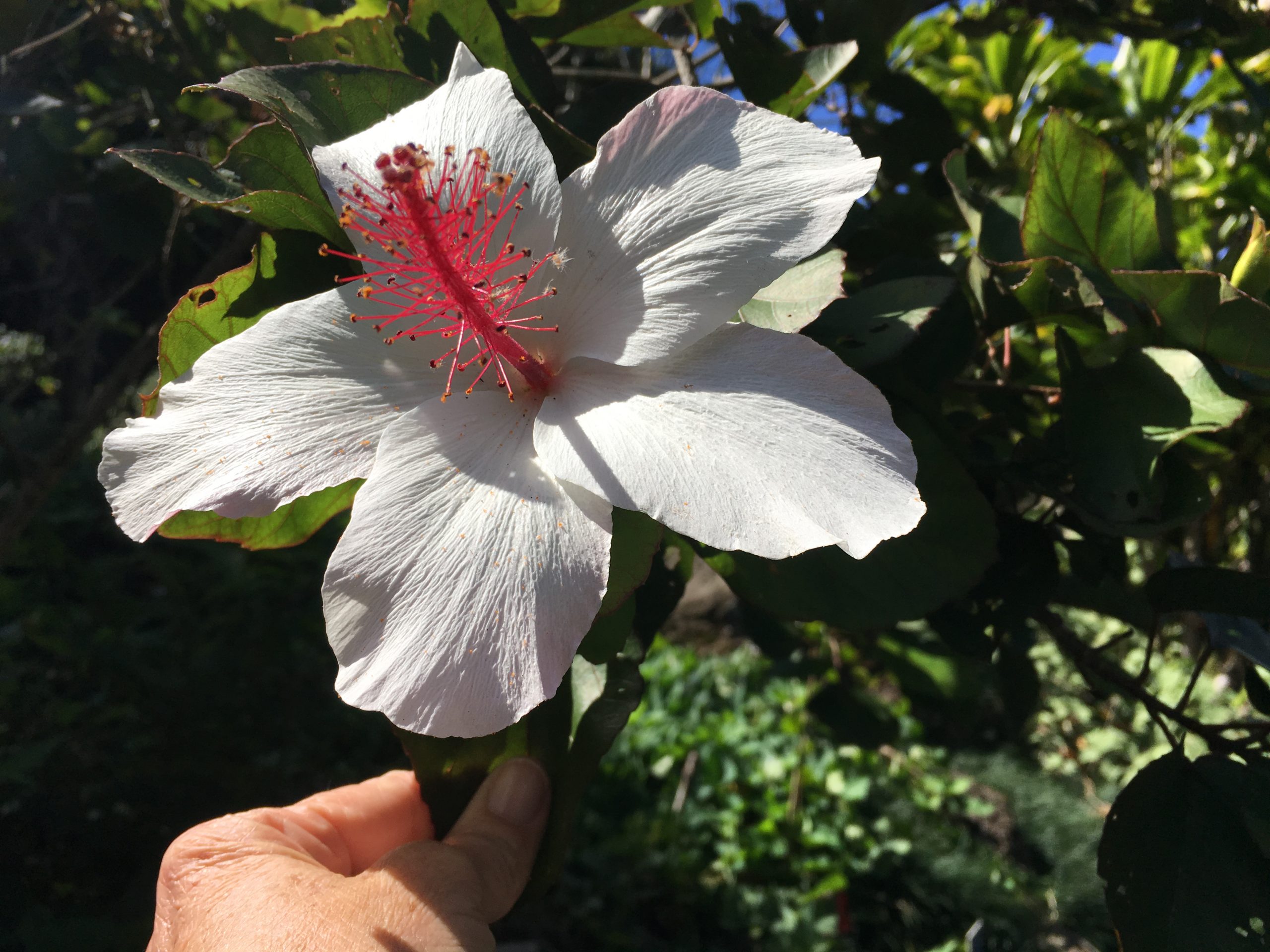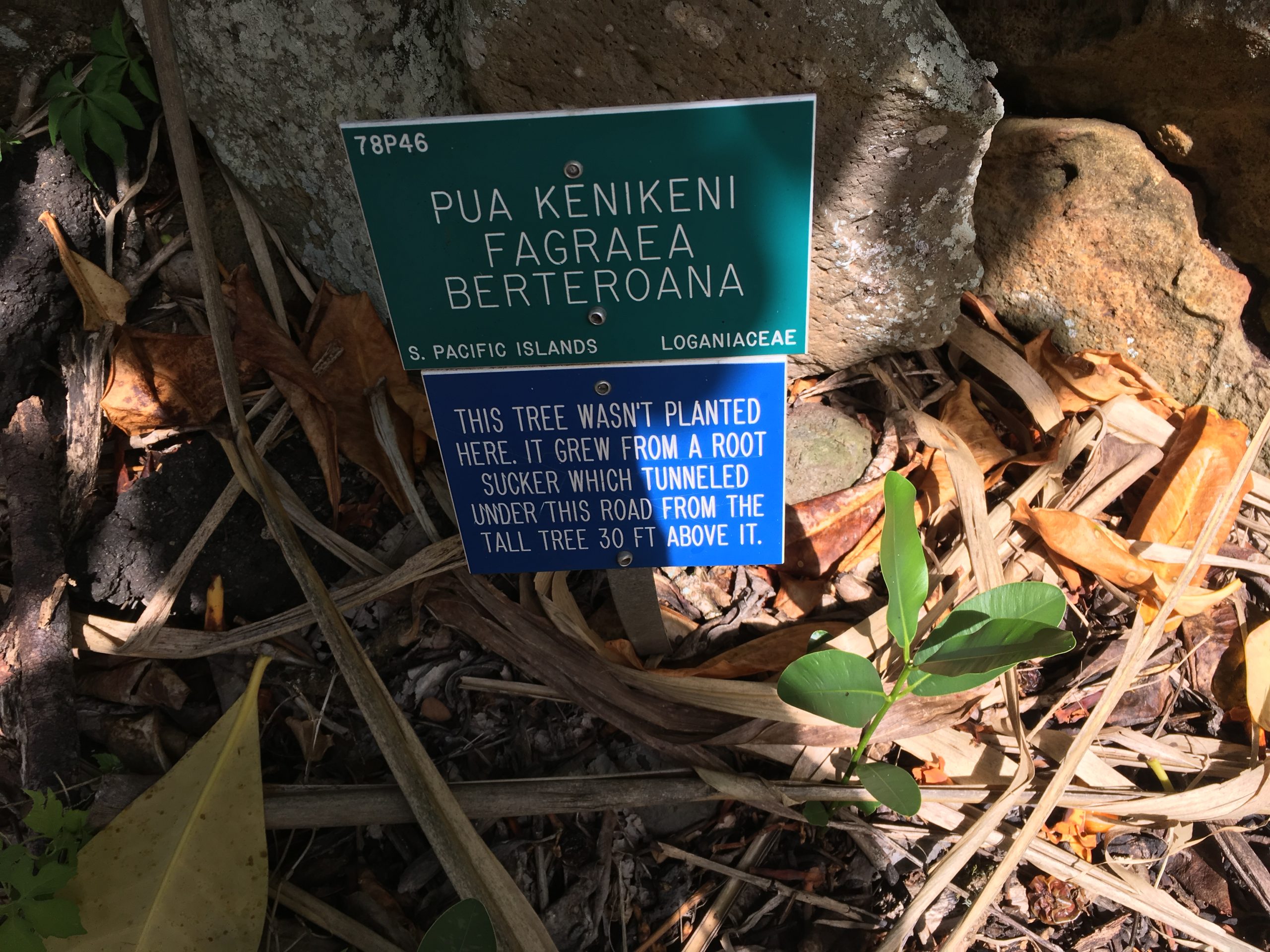Army Drop-Offs for Hawaiian Plant Conservation
When Joseph Rock, one of Hawai’i’s first botanists, roamed through the forests on O’ahu one hundred years ago, he came across giants. Trees of extraordinarily hard wood reaching 100 feet tall, with fluted trunks up to eight feet wide, the largely self-taught botanist dubbed these giants the ‘monarchs of the Hawaiian forests’ and placed them in a new genus named for his colleague (Neowawrea after Dr. Wawra).
Now known as Fluggea neowawraea by scientists and always known as mehamehame by Hawaiians, these special trees have sadly lost their crown. Though hit hard by drought, there were still large trees in the 1970s when the black twig borer (Xylosandrus compactus) began wreaking havoc, damaging apical meristems and killing the large trees that had remained.
A few populations of mehamehame persist on some of the Hawaiian Islands, including O’ahu, but it has disappeared from others. The Army is the largest landholder on Hawai’i, controlling nearly 21% of the islands lands and manages some of the remaining populations – which consist of small offshoots of former monarchs or seedlings. Reproduction is minimal, as there are few plants left and the species is dioecious – meaning there are male and female individuals. As a backup, the Army has sent some dozen plants to David Orr and the folks at Waimea Valley. Mehamehame is just one of several plant species the Army’s Natural Resources Program has sent David’s way.
The Army has been involved with Waimea Valley and the garden for many decades. But the partnership to provide ex situ backup of the Army’s rare species at the botanical garden has really bloomed in the past 20 years. A single nīoi (Eugenia koolauensis) plant given to the garden in 1991 has six healthy seedlings added to the collection, and such successes helped solidify the partnership. Of the various botanical gardens on the island, Waimea Valley provides a more xeric, or dryer climate and can better support certain species. This doesn’t mean that the specimens always thrive. But they do provide the opportunity for the staff to learn more about the species and what may help it going forward. Half of the plants are monitored by the garden staff while the Army program monitors the other half. The first Wednesday of each month sees an Army group pull up to check on plants.
-

Joyce Maschinski tours Waimea Valley with botanical collections specialist David Orr. Photo credit: Maureen Wilmot, Center for Plant Conservation. -

Mehamehame (Fluggea neowawraea) trees still struggle against the black twig borer in Waimea Valley, but the seedlings hold on. Photo credit: Josephine Hoh, courtesy of Waimea Valley. -

Once the forests were home to 100-foot tall Mehamehame (Fluggea neowawraea), but now Waimea supports just the small trees the Army entrusted into their care. Photo credit: Josephine Hoh, courtesy of Waimea Valley.
Many of Hawaii’s species are facing a wide suite of threats, for example – insects like the black twig borer, fungal infections like the invasive rust devastating oh’ia, and habitat loss. All these are then compounded by climate change. Maintaining specimens in gardens and semi-wild locations as part of an ex situ conservation program will be key to keeping some of these species around. As a prominent land owner, the Army, through its O’ahu Army Natural Resources Program, is doing its part. Some of the plants that Waimea has received include rare Cyaneas and the state flower, yellow hibiscus (Hibiscus brackenridgei). Though the threats persist, the ex situ collections offer some protection, and as David states, “It’s part of our legacy, and it’s our obligation to keep germplasm and hope for keeping the core of these plants alive through the bottleneck of ignorance.”
David knows mehamehame seedlings found in Waimea Valley are not likely to reach the impressive stature of the two eight-foot wide specimens whose decaying trunks still linger in the forest on grounds. Not even the little fighter that seems to be doing well in the garden parking lot. But these specimens can help the species hang on and, with some patience and ingenuity from people, eventually help the species become monarchs of the forest once again.

